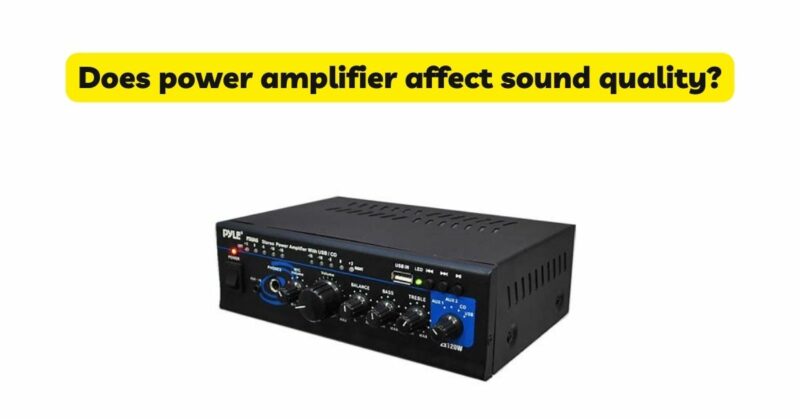When it comes to audio systems, one component that often sparks discussions among enthusiasts is the power amplifier. The power amplifier is responsible for driving the speakers and converting low-power audio signals into amplified signals that can produce sound. A common question that arises is whether the power amplifier has an impact on sound quality. In this article, we will explore the relationship between power amplifiers and sound quality, considering various factors and aspects of amplifier design and performance. By understanding these factors, we can gain insights into how power amplifiers can influence the overall audio experience.
Power Amplifier Basics
Before delving into the impact of power amplifiers on sound quality, it is essential to understand the basic functionality of these components. Power amplifiers take an audio signal as input and amplify it to a level that can drive the speakers. They essentially provide the necessary power to reproduce the audio signal accurately and efficiently.Power amplifiers come in different types, including Class A, Class AB, Class D, and Class H, each with its own characteristics and performance attributes. They vary in terms of efficiency, power output, and distortion levels.
Factors Affecting Sound Quality
Several factors come into play when considering the impact of power amplifiers on sound quality. Let’s explore some of the key factors:
- Distortion: Distortion refers to any alteration or deviation from the original audio signal. Power amplifiers can introduce distortion due to nonlinearities in the amplification process. Class A amplifiers, for example, tend to have lower distortion levels compared to Class AB or Class D amplifiers. Distortion can affect the clarity, accuracy, and fidelity of the reproduced sound.
- Signal-to-Noise Ratio (SNR): SNR represents the ratio of the desired audio signal to the background noise introduced by the amplifier. Higher-quality power amplifiers typically have a higher SNR, resulting in cleaner and more transparent sound reproduction.
- Frequency Response: The frequency response of a power amplifier indicates how it handles different frequencies across the audible spectrum. A flat and wide frequency response ensures that the amplifier accurately reproduces the entire range of frequencies, preserving the balance and integrity of the audio signal.
- Dynamic Range: The dynamic range represents the difference between the softest and loudest sounds that an amplifier can reproduce without distortion or noise interference. A power amplifier with a wide dynamic range can faithfully reproduce the nuances and dynamics of the audio, providing a more immersive and realistic listening experience.
- Power Output: The power output of an amplifier determines its ability to drive the speakers effectively. Insufficient power output can lead to clipping or distortion when trying to reproduce high-volume passages. Adequate power reserves in the amplifier ensure that it can handle demanding audio signals without compromising sound quality.
- Damping Factor: The damping factor represents the amplifier’s ability to control the movement of the speaker diaphragm. A higher damping factor results in tighter and more controlled bass response. It helps prevent the speaker from resonating or vibrating excessively, enhancing overall sound quality.
- Impedance Matching: Impedance matching between the amplifier and the speakers is crucial for optimal power transfer and sound quality. Mismatched impedance can lead to frequency response irregularities, affecting the tonal balance and overall performance.
- Build Quality and Components: The build quality and choice of components in a power amplifier can impact its performance and sound quality. High-quality components, such as capacitors, resistors, and transistors, can contribute to improved signal integrity and fidelity.
Conclusion
In conclusion, power amplifiers do have an impact on sound quality. Factors such as distortion, signal-to-noise ratio, frequency response, dynamic range, power output, damping factor, impedance matching, and build quality all play significant roles in determining the overall sonic performance of an audio system. Choosing a high-quality power amplifier that meets your specific needs and preferences can contribute to a more accurate, transparent, and immersive audio experience. It is important to consider these factors and conduct thorough research before making a decision on a power amplifier, ensuring that it complements the rest of your audio setup and meets your expectations for sound quality.


